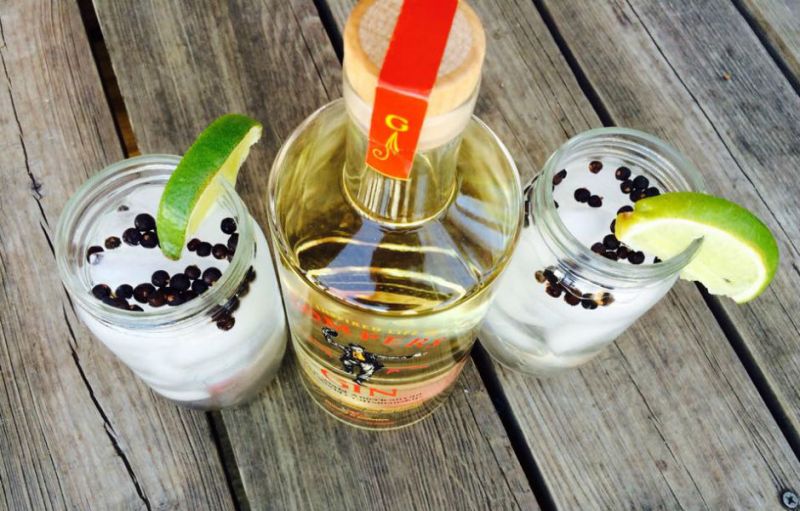
In my opinion, the advent of American- or New Western-style gin is one of the most exciting developments to hit the booze scene in recent memory. In case you haven’t noticed, gin has been experiencing a renaissance over the past decade or so. Slowly but surely, distillers have broken free from the categorical boundaries of “dry gin,” and are now expanding what the spirit can be. In other words, gin isn’t just about juniper anymore. Sure, juniper berry is and always will be one of the predominant ingredients in gin, but nowadays artisan distillers are inviting other botanicals into the mix. The walls have been broken down, and now the spectrum of flavors you can find inside a bottle of gin is now almost immeasurably broad.

Most gins lean toward either the citrusy side of the spectrum, or the floral/botanical/herbaceous side. Gompers is definitely on the citrus end, but it’s also got an interesting and unorthodox ingredient inside that takes it in a completely different direction: pear. Juniper berry is still very much up front, but the sweet flavor of golden pear is almost its equal here, with a subtle hint of lavender sneaking up from below to round everything out. It’s one of the most sippable gins I’ve ever encountered.
It’s great with just a splash of soda, or poured liberally into a puddle of tonic. It mixes well with just about any fruit juice, and if you’d rather forego any additives, it tastes fantastic just by itself — even at 90 proof. Even if you don’t like gin, you’ll probably like Gompers.
I suggest you drop what you are doing and go find yourself a bottle immediately. It’s still pretty small right now, so you might have some trouble tracking it down outside of Oregon, but it’s well worth the hunt. Find out more here.
Editors' Recommendations
- The 9 Finest Gins for Sipping and Mixing
- The Best American Gin
- British Airways Unveils Gin Engineered for High-Altitude Cocktails


